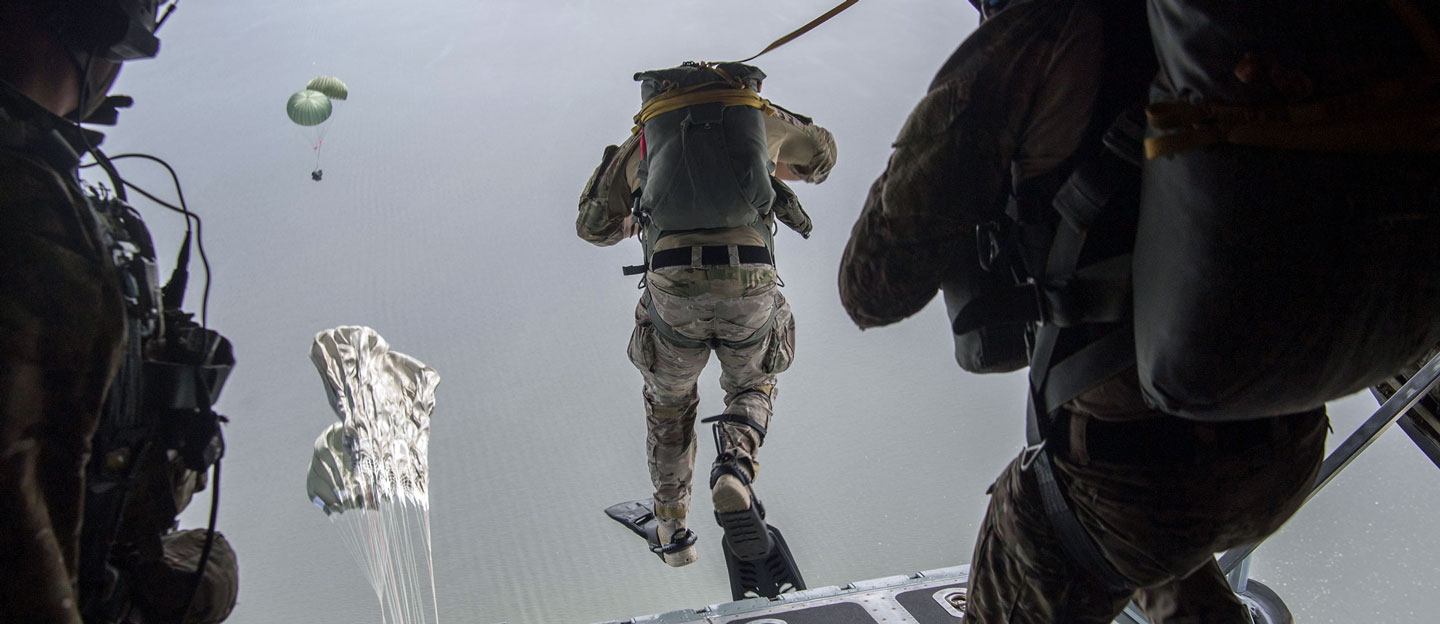TRAINING
Their training as well as their unique mission, earns them the right to wear the scarlet beret. When they join Special Tactics community, they receive additional training to support U.S. Special Operations Command assets. Their training includes:

SPECIAL WARFARE PREPARATORY COURSE (SW PREP)
Candidates undergo intense strength training by running, rucking, and swimming extensively. They will also learn about the rich history of Special Warfare, Esprit De Corps and ultimately take the Physical Ability and Stamina Test (PAST) to see if they will move on to tech training.
SPECIAL WARFARE PRE-DIVE COURSE
Because an emergency cn occur in the middle of the ocean, PJs must be expert divers. This course physically and mentally prepares candidates for the rigors of upcoming combat dive school.It consist of intense calisthenics, middle- and long- distance running, swimming and, most importantly, water-confidence training.
SPECIAL WARFARE COMBAT DIVE COURSE
Building upon what they learned during the pre-dive course, PJs undergo extensive combat dive training so they can render medical aid whenever, wherever.
AIRBORNE SCHOOL
When an aircraft goes down, it's often in the middle of nowhere, which means PJs must airdrop in to help the survivors. During airborne training, they learn basic parachuting and prepare for static line jump operations.
MILITARY FREE-FALL COURSE
In addition to being certified paramedics, PJ's are also advanced skydivers. This is where they take that next step by building on the training they received at airborne school.
SERE TRAINING
Special Warfare Airmen conduct missions in some of the most extreme and hostile places on the planet. This is why they receive survival, evasion, resistance and escape training.
PARARESCUE EMT-B COURSE
The primary job of a PJ is to provide medical aid to downed personnel. This is the first step in how to do that by learning basic emergency medical training.
PARARESCUE EMT-P COURSE
After obtaining the fundamentals of emergency medicine, PJ candidates continue onto advanced medical training where they learn additional lifesaving procedures in pressure situations in order to become certified paramedics.
PARARESCUE APPRENTICE COURSE
PJ's are combat medics and rescue specialists who will often find themselves in the middle of a war zone. This is where they learn to apply their training under pressure while obtaining fundamental combat skills utilizing a range of weapons and strategies.